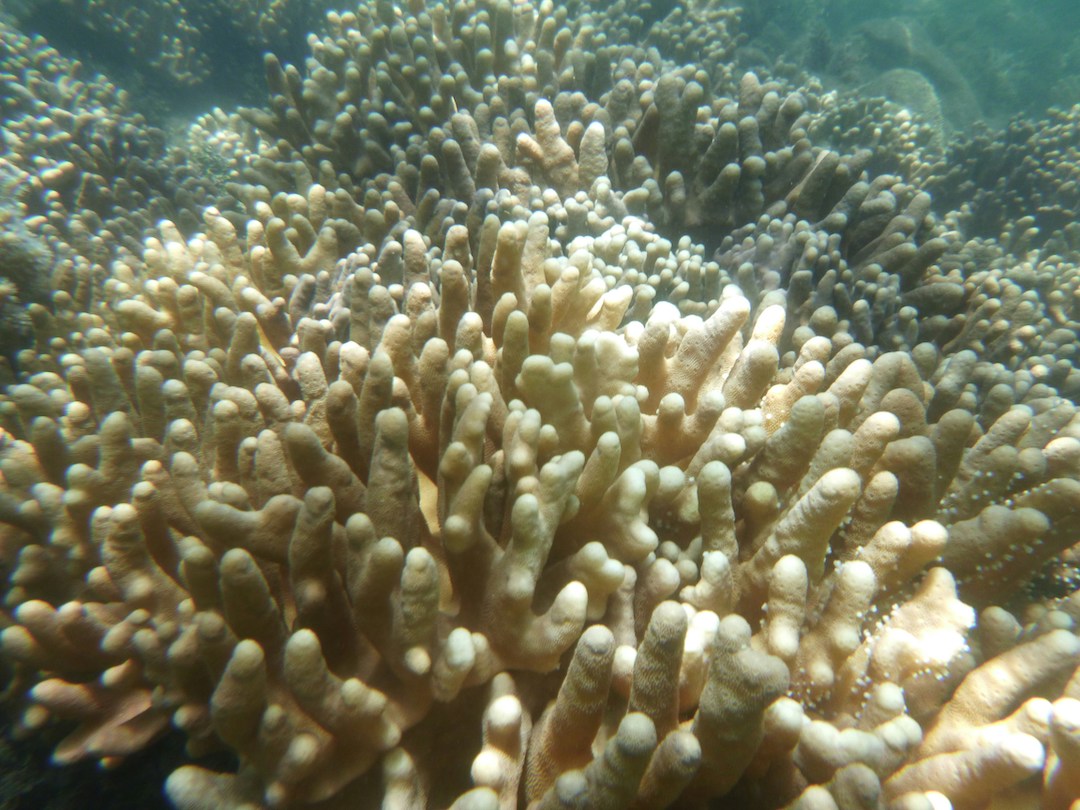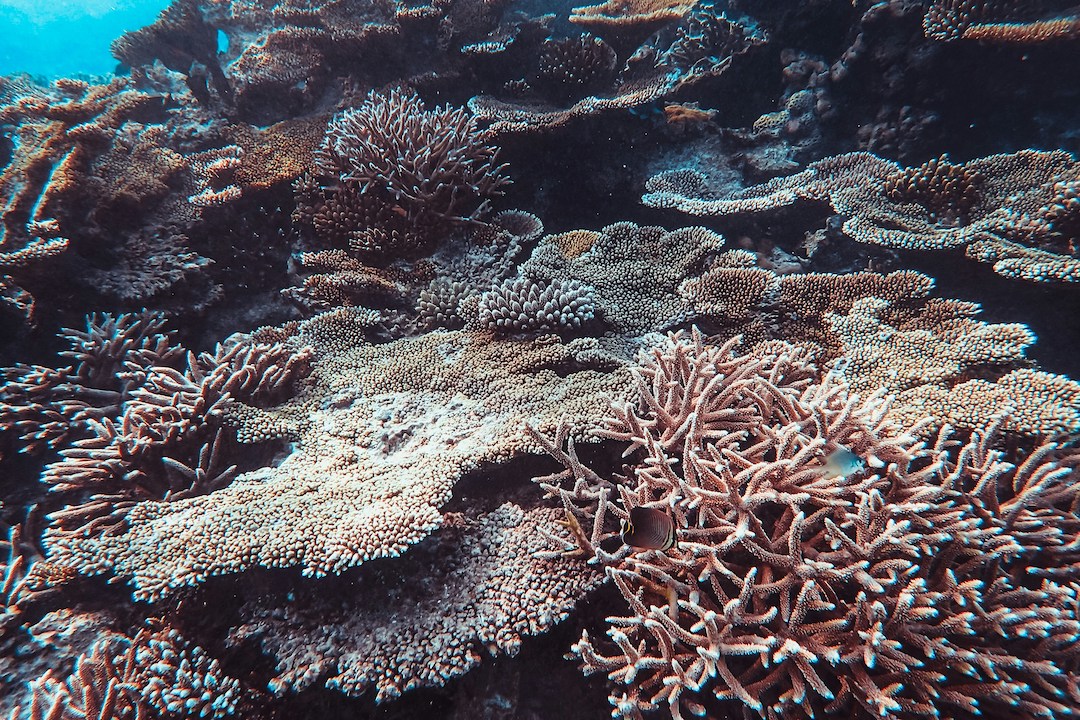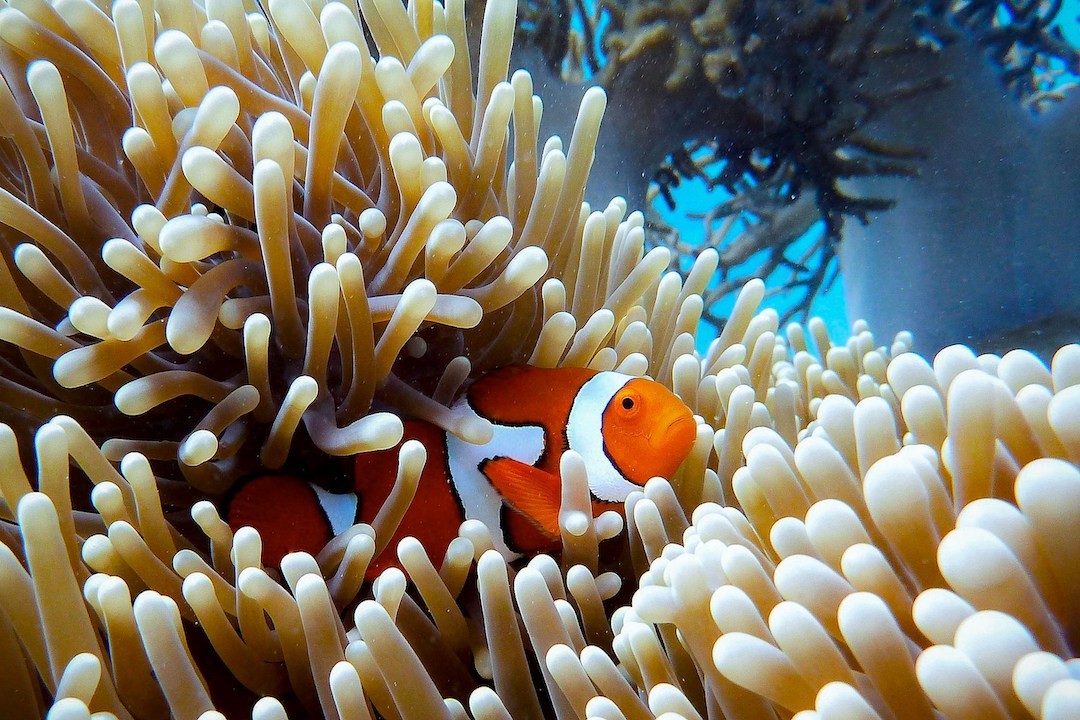New data has revealed that underwater burning in the Great Barrier Reef is causing as much damage as Black Summer bushfires.
Without immediate intervention, the Great Barrier Reef could suffer irreparable damage, leading to the destruction of one of the most important marine ecosystems in the world.

Bleached coral in the Great Barrier Reef.
What is coral bleaching?
Coral bleaching is a process where coral turns white due to the loss of symbiotic algae and photosynthetic pigments from stressors including changes in temperature, light and nutrients. This bleached coral is more susceptible to disease and can struggle to reproduce, sometimes leading to the collapse of entire marine ecosystems.
In the late 1990s, the Great Barrier Reef underwent repeated mass bleaching due to marine heatwaves brought about through climate change. Since then, every part of the reef has experienced bleaching at least once, with some areas suffering from four consecutive bleachings, without leaving enough time for a proper recovery.

Proportion of individual reefs across the Great Barrier Reef that endured heat stress of more than 4 Degree Heating Weeks. Analysis provided to Climate Council, based on NOAA Coral Reef Watch.
According to the Climate Council, more than 90 percent of the excess heat trapped in our atmospheric system due to climate change is absorbed into the ocean. Sadly 14 March 2024 marked a full year on which a new global average sea surface temperature record was set each day.
The reef was listed as one of the natural wonders of the world on the World Heritage List in 1981. It is a site of incredible natural beauty and significant environmental importance. In light of current climate research, experts are stressing the need for action.
A reef in recovery
The recent report was conducted by the Great Barrier Reef Marine Park Authority (GBRMPA), the National Oceanic and Atmospheric Administration (NOAA) in the United States, and other organisations.
Surveys of the area revealed that 80 percent of the Great Barrier Reef is currently enduring dangerous levels of heating, at over 4 degree heating weeks, and almost half of the individual reefs are experiencing heat stress.
The scientists identified coral bleaching across an area similar in size to the total land burned during the Black Summer fires of 2019-2020. This bleaching is currently occurring at lower depths than before, killing centuries-old corals.

While it took about 8000 years for the Great Barrier Reef to develop, it could be destroyed in record time unless something is done. It is the world’s largest collection of coral reefs, according to UNESCO, home to 400 types of coral, 1,500 species of fish and 4,000 types of mollusc.
Amanda McKenzie, Climate Council CEO, stresses the need for change.
“The survival of the reef – and all life that depends on it – hinges on our willingness to drastically cut climate pollution in the 2020s, which means scaling up clean energy as quickly as possible so we can phase out coal, oil and gas,” she explains.
Similarly, Research Director at the Climate Council, Dr Simon Bradshaw, believes that the Great Barrier Reef is in crisis.
“Marine heatwaves, fuelled by climate pollution, have dealt blow after blow to the Great Barrier Reef. We’re likely now witnessing the most widespread and severe mass bleaching event ever recorded.
“Southernmost parts of the Reef, which had been largely spared previously, have been hit particularly hard this time, with bleaching affecting many more species, extending to greater depths, and affecting some of the oldest and most resilient corals.
“This is a disaster at our doorstep: a direct result of collective failure to cut climate pollution fast enough. Australia can accelerate the build out of renewable energy and move swiftly beyond fossil fuels so that we protect the places we all love and depend on before it’s too late.”
To learn more about environmental threats to the Great Barrier Reef, click here.

